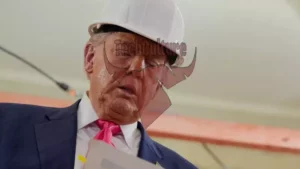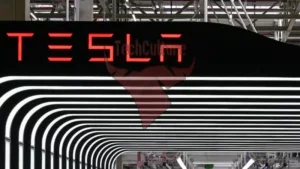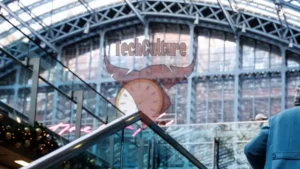When Charles Hurwitz, CEO, and President of Houston-based MAXXAM, Inc., addressed MBA students in a “thought leadership” discussion at the Jesse H. Jones Graduate School of Business at Rice University recently, you can be assured of one thing. Everyone listened.
Moderated by the Dean of Jones Business School, Peter Rodriguez, the forum included 100 invited guests, Rice MBA students, members of the business community, and Houston Press.
During the Q&A-style session, he took his audience on a journey through his storied career path that spans more than 50 years and includes investments in diverse operating businesses spanning many industries, including a pattern business, the sugar industry, oil and gas, aluminum, forest products, resort development and operations, pari-mutuel racing and commercial real estate development. Part of that journey included the many business lessons he has learned along the way.
Charles Hurwitz grew up in Kilgore, Texas, and graduated from the University of Oklahoma (OU). A career in the oil business seemed like a likely path for an aspiring young college student at that time since Kilgore was then known as the oil capital of the world. However, it was while he was a student at OU that he attended a class with a presentation from an MIT professor who would change the trajectory of his life.
The New York Times once wrote that Hurwitz was reading bond tables when others were learning to ride a tricycle. While not entirely fact, he is a self-professed information junkie with a gift for reading analytical details and identifying patterns and correlations that others might simply overlook. That gift, and his unique ability to see what others do not see, are at the core of his impressive career success.
Hurwitz began his career as a stockbroker and had some early successes that bolstered his confidence. “Seeing what I could do with a little bit of money made me determined to see what I could do with a lot,” he said.
At age 27, Hurwitz did the unimaginable and founded Hedge Fund of America, the nation’s first public hedge fund, something the investment experts said could not be done. Not only was he successful in creating the hedge fund, but he also recruited a veritable “who’s who” of industry heavyweights to serve on its board. Hedge Fund of America became the largest mutual fund offering in Texas history.

Hurwitz Lesson #1: “Think differently.”
While researching Amstar Sugar, Hurwitz noticed a pattern in the stock and bought a large block of it at the bottom of the curve. That got the attention of some very successful and wealthy Texans who ended up buying his block for a large premium.
Hurwitz Lesson #2: “Outperform, and you will get noticed.”
Still, early on in his career, Hurwitz had a large appetite for acquiring troubled companies. He credits that to his need at the time to be creative since he didn’t have a lot of money. Normally, the more problems a company has, the cheaper the stock. His goal was always to doctor those companies back to health. “Once you’re able to purchase a majority block of stock,” he said, “acquiring the remaining shares becomes much easier.”
Hurwitz’s acquisition of McCullough Oil in the early ’80s was prompted by an article he read in the Wall Street Journal. The company’s stock price had plunged due to a highly publicized accident that involved one of McCullough’s products. While others simply read the news, the article prompted Hurwitz into action. He called the phone number listed in the article and ultimately acquired the troubled company. He initially bought a large block of stock, paying cash and taking out a note for the rest. He later bought all of the remaining shares. The assets purchased in this acquisition produced substantial cash flow from properties through numerous business cycles and are still producing cash flow some 40 years later.
An interesting by-product of the McCullough acquisition is that one of the company’s assets happened to be the London Bridge. Hurwitz disassembled the bridge piece-by-piece and moved the famous landmark to Arizona, putting Lake Havasu, Arizona, on the map.
Hurwitz Lesson #3: “Think long term when making investments.”
Another of Hurwitz’s strategic acquisitions included a 100-acre hilltop parcel of land in Rancho Mirage, California, with magnificent views. The area was near a very elite neighborhood often referred to as the “President’s Playground.” Hurwitz wanted to develop the land, but that was met with fierce resistance from permitting agencies and the community, including one of its residents, Barbara Sinatra, wife of Frank Sinatra, who filed a lawsuit to prohibit him from development. Hurwitz needed a strategy to get the objectors to come around, and he soon found one. He invited President Gerald Ford, who also lived in the neighborhood, to join his board, and the president agreed. Things changed dramatically, and Hurwitz went on to build a Ritz Carlton on the hilltop. Frank Sinatra sang in the bar during the hotel’s opening, and of course, Hurwitz ended up making a nice profit on his parcel of land.
Hurwitz Lesson #4: “Find proven people to help strategically.”
You might not think of a pattern business as a likely investment someone like Hurwitz would entertain. However, the company, Simplicity Pattern had a large cash position and significant net operating losses. Due to the nature of the business, Hurwitz knew the company would not be around long term, so the stock price was cheap. He seized the opportunity and soon after learned that a business acquaintance had also bid on the company because of its tax attributes. Both men were good listeners and good problem-solvers, which ultimately led to trading one company for another. That is how Hurwitz acquired 2,800 acres of oceanfront property in Puerto Rico that is under development today.
Hurwitz Lesson #5: “Be a good listener; you rarely learn anything while talking.”
As with everything in life, there are ups, and there are downs. Mr. Hurwitz’s business ventures are no exception. One such investment was the purchase of Pacific Lumber Company. After hiring experts to fly over and conduct a visual time inventory, Hurwitz found that it showed strong potential due to substantial inventory beyond what was on the company’s books. He purchased the company at a hefty price. Redwood trees are fast-growing. For every tree they cut, Hurwitz made sure that they planted seven in its place. However, that was not enough to keep concerned audiences at bay. He simply did not realize at the time that this acquisition would trigger decades of conflict with regulators and environmentalists and plenty of negative press.

Hurwitz Lesson #6: “Never underestimate the power of regulators.”
Again, Hurwitz’s avid readership and attention to detail paid off when he read an article in the Wall Street Journal saying the federal government was bundling properties with defaulted mortgages for sale through its asset management company – the Resolution Trust Corporation (RTC). The government was offering to finance buyers, but Hurwitz noted in the fine print that there was a 27% discount for all cash purchases. He took a bold position and was the only cash bidder on the portfolio. He sold the assets six months later for a substantial profit, providing capital for his future transactions.
Hurwitz Lesson #7: “Be bold, do something different.”
Hurwitz’s ownership of Pacific Lumber would ultimately prompt a call from yet another President. This time it was from President Bill Clinton from his office in Airforce One. Hurwitz said when his assistant answered the phone, he and his staff initially thought it was a joke. It was a call that would lead to negotiations with the White House and the Governor of California to sell 7,500 of old growth redwood trees to the Federal Government for cash and assurances regarding future harvest levels.
Hurwitz Lesson #8: “Identify the decision makers and reach them. Presidents, Governors, etc., are just people. Stay focused even in the most challenging of situations.”
This would not be the last of Hurwitz’s battles with the Federal Government. He was sued for more than $1 billion over the failure of Texas-based United Savings and Loan. But what was really at the heart of the suit was still the government’s desire to control the old-growth redwood trees. By putting Hurwitz in a position to lose everything, the government felt it could leverage the S&L lawsuit to gain control. They likely didn’t realize that they had tangled with a fighter. Hurwitz spent $45 million over the next ten years defending himself and ultimately prevailed, resulting in the largest judgment against the Federal Government in history. The judge’s opinion stated, “this case was government at its worst” and “the government became of more of a Cosa nostra than a res publica.” Hurwitz simply summarized by saying, ” While it was great to win the case, it consumed more than ten important years of my life.”
Hurwitz Lesson #9: “Avoid litigation if at all possible…even when you know you are right. It is a huge time and money waster.”
You would be highly unlikely to survive different lawsuits from the likes of Barbara and Frank Sinatra and the federal government, to say nothing of unrelenting attacks both by the SEC and by an endless procession of radical environmentalists – without possessing an uncommon ability to assess and solve problems.
And yet, that is precisely what Charles Hurwitz has done throughout his 50+ year career in business.
During this time, he has conceived of – and executed – some of the most complicated and controversial transactions.
That doesn’t come without a cost – both financially and personally, but his approach today remains the same as it has always been. Avoid fueling the fire by reacting to accusations. Instead, keep working as an imaginative investor. Stay calm and carry on.
Hurwitz Lesson #10: “You can’t please everyone, but listen and learn.
Reflecting on the ten lessons from Charles Hurwitz’s illustrious career brings back the words of a famous former Houston NFL coach “He is not in a class by himself, but it won’t take long to call the roll.”
We now all anxiously await what comes next and look forward to Lesson #11.
Addendum:
Some of Hurwitz’s other accomplishments not mentioned in this article include luxury residential real estates developments such as Adero Canyon and Eagles Nest, nestled in the mountains surrounded by the serene desert setting of Fountain Hills, Arizona, Mirada Estates overlooking 270,000 acres of untouched wilderness and breathtaking views located in Palm Desert, California, and Palmas del Mar consisting of a country club, two championship golf courses, and the largest tennis center in the Caribbean located in the southeast corner of the island of Puerto Rico. He also is known for expanding the Sam Houston Race Park located in Northwest Houston.




